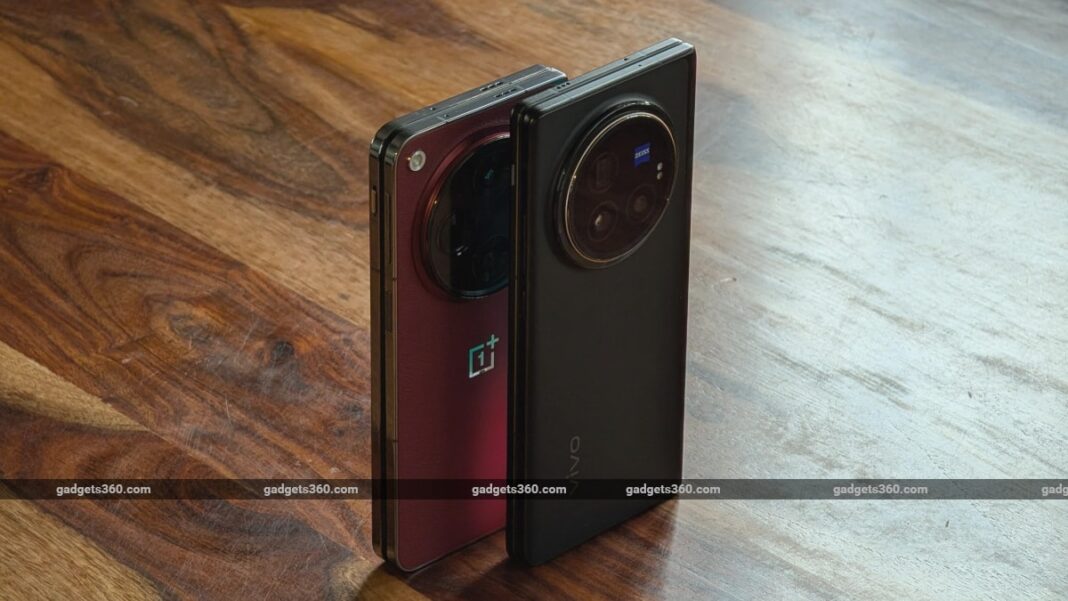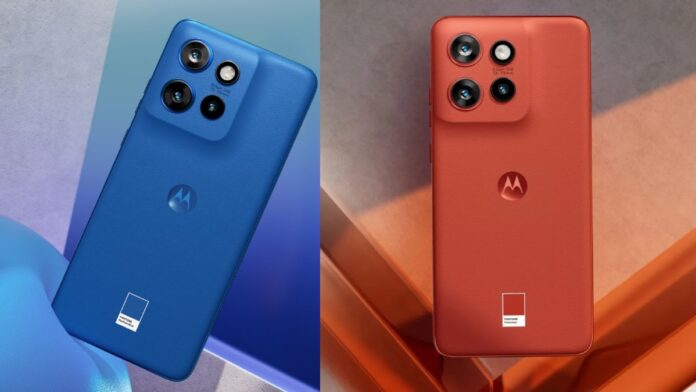In Short:
OnePlus debuted its first foldable phone, the OnePlus Open, in India, impressing with its lightweight design, excellent camera, and competitive price of Rs. 1,39,999. However, Vivo’s X Fold 3 Pro quickly emerged with a slimmer design and better photo quality, despite some software issues. Vivo also boasts longer battery life and faster charging compared to OnePlus, making it a top choice for photography enthusiasts.
OnePlus, despite entering the foldable smartphone market later than many competitors, created significant buzz with the global launch of its first foldable device, the OnePlus Open, in India. This device is appreciated for its slim and lightweight design when folded, alongside an impressive camera system that is uncommon in foldables. In a landscape where Samsung was still striving to slim down its Galaxy Z Fold 5, the OnePlus Open stood out as a compelling option, especially with its competitive launch price of Rs. 1,39,999 and an optimized user experience via the near-flawless OxygenOS.
Months later, Vivo, a sibling brand under the BBK Electronics umbrella, introduced an existing model, previously launched in China, to the Indian market. As anticipation builds for the Galaxy Z Fold 6, Vivo’s entry into the foldable space showed a bold design and a premium price point. Despite facing some issues, early reviews indicate that Vivo has managed to deliver a solid smartphone experience.
The OnePlus Open’s vegan leather rear panel indeed adds a distinctive touch to its design while enhancing grip.
Design Considerations
While OnePlus set a high bar at launch, Vivo swiftly captured attention with the design of its X Fold 3 Pro, which is both slimmer and lighter than the Open. The subtle tapered corners of the Vivo model are perceived as more comfortable compared to the sharper edges of the OnePlus Open, which can be uncomfortable during prolonged use. Vivo’s design also includes a curving on one edge of the cover screen and rear panel, giving it a less boxy appearance, a departure from the flatter screens of its competitors.
Both foldables feature alert sliders, but OnePlus offers a more user-friendly three-stage slider due to its ergonomic design.
Regarding usability, the OnePlus Open excels in one-handed operation, despite not being the slimmest option. Its shorter cover display facilitates a more comfortable one-handed experience compared to the taller Vivo, which often requires two hands due to its width.
In comparison, the Open’s display is compact, while the X Fold 3 Pro’s is more elongated.
The OnePlus Open features a grippy vegan leather rear panel that instills confidence during usage, whereas the Vivo’s glass design can be slippery. Despite both smartphones using a similar book-style form factor, their main displays present distinct user experiences. The OnePlus Open boasts a 7.82-inch inner display with a squarish aspect ratio, optimized for multitasking, whereas Vivo’s 8.03-inch display offers a rectangular format that caters well to both productivity and entertainment.
Both devices support multitasking capabilities, managing up to four applications simultaneously.
Software Performance
While both brands offer strong hardware, the software experience diverges sharply. The OxygenOS on the OnePlus Open integrates features like app scaling and multitasking efficiently right from launch, an impressive feat for a first-generation foldable. In contrast, Vivo’s software faced execution challenges, particularly with app support when the device is held horizontally, leading to a suboptimal user experience.
Neither competitor measures up to the software sophistication exhibited by Samsung‘s Galaxy Z Fold 6 or Google‘s Pixel 9 Pro Fold, particularly in terms of AI integration, wherein both OnePlus and Vivo appear about a year behind.
Despite the recent launch, Vivo (right) still grapples with optimization issues affecting wide sections of its display.
In terms of performance, Vivo employs the latest Qualcomm Snapdragon 8 Gen 3 SoC, while OnePlus relies on the slightly older Snapdragon 8 Gen 2. Both devices present ample RAM at 16GB, ensuring a smooth browsing experience. However, Vivo manages heat dispersion better, unexpectedly given its thinned design.
| Benchmarks | Vivo X Fold 3 Pro (Cover/Main) | OnePlus Open (Cover/Main) |
|---|---|---|
| AnTuTu v10 | 20,51,650 / 20,63,526 | 13,05,500 / 12,64,480 |
| PCMark Work 3.0 | 14,489 / 14,251 | 10,276 / 10,521 |
| Geekbench V6 Single | 2,143 / 2,167 | 1,426 / 1,056 |
| Geekbench V6 Multi | 6,562 / 6,800 | 4,096 / 4,114 |
| GFXB T-rex | 120 / 120 | 60 / 60 |
| GFXB Manhattan 3.1 | 120 / 105 | 60 / 60 |
| GFXB Car Chase | 102 / 67 | 60 / 46 |
| 3DM Slingshot Extreme OpenGL | Maxed Out / Maxed Out | Maxed Out / Maxed Out |
| 3DM Slingshot | Maxed Out / Maxed Out | Maxed Out / Maxed Out |
| 3DM Wild Life | Maxed Out / Maxed Out | Maxed Out / Maxed Out |
| 3DM Wild Life Unlimited | 17,985 / 18,721 | 13,913 / 13,731 |
Vivo’s X Fold 3 Pro currently stands as the only foldable available in India featuring dual in-display fingerprint readers.
Camera Performance
The importance of camera functionality cannot be overstated. Consumers rarely wish to invest significantly in a smartphone only to need a secondary flagship device specifically for photography. In this comparison, Vivo distinguishes itself with superior camera performance, with images captured from its primary and telephoto lenses notably sharper and demonstrating more accurate color representation than those from the OnePlus Open.
Camera samples taken in daylight (click image to enlarge).
The OnePlus Open struggles with dynamic range and color reproduction, particularly showcasing inaccuracies in the telephoto shots. Meanwhile, Vivo’s telephoto camera better handles moving subjects, delivering notably clearer photos. In low-light scenarios, Vivo maintains a commendable dynamic range, revealing additional detail in dark areas.
Low-light camera samples (click images to enlarge).
The overall quality of the ultrawide cameras on both models appears commendable; however, Vivo experienced initial white balance inconsistencies, which software updates have begun to resolve.
Selfie camera samples (click images to enlarge).
Video recording performance favors the OnePlus Open, which provides superior dynamic range and more consistent frame rates compared to the X Fold 3 Pro.
Battery Life Analysis
Battery longevity remains a critical determinant in smartphone selection. Here, Vivo surpasses OnePlus with exceptional battery performance, yielding up to a day and a half of heavy usage from its 5,700mAh battery, while the OnePlus Open can comfortably last a full day with its 4,805mAh power source. Additionally, the Vivo charges from 0-100% in just 43 minutes, while the OnePlus takes approximately 53 minutes. Notably, Vivo also includes a 50W wireless charging feature, which the OnePlus model currently lacks, potentially influencing consumer preferences.
The Vivo X Fold 3 Pro (right) stands out for its efficient battery charging capabilities and overall slimness.
Conclusion
In a market dominated by established players like Samsung and its Galaxy Z Fold 6, which heavily relies on AI integration, alternatives such as Vivo’s X Fold 3 Pro present compelling options for those seeking a foldable device. Although it carries a higher price tag of Rs. 1,59,999, it delivers exceptional value, especially for users demanding high-quality photography and robust battery performance from a foldable smartphone. With its expansive display, it also caters well to users looking to perform light work while on the move.





